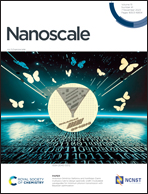Enhancing electrochemical sensing through the use of functionalized graphene composites as nanozymes
Abstract
Graphene-based nanozymes possess inherent nanomaterial properties that offer not only a simple substitute for enzymes but also a versatile platform capable of bonding with complex biochemical environments. The current review discusses the replacement of enzymes in developing biosensors with nanozymes. Functionalization of graphene-based materials with various nanoparticles can enhance their nanozymatic properties. Graphene oxide functionalization has been shown to yield graphene-based nanozymes that closely mimic several natural enzymes. This review provides an overview of the classification, current state-of-the-art development, synthesis routes, and types of functionalized graphene-based nanozymes for the design of electrochemical sensors. Furthermore, it includes a summary of the application of functionalized graphene-based nanozymes for constructing electrochemical sensors for pollutants, drugs, and various water and food samples. Challenges related to nanozymes as electrocatalytic materials are discussed, along with potential solutions and approaches for addressing these shortcomings.

- This article is part of the themed collections: Celebrating International Women’s day 2024: Women in Nanoscience, Nanozymes, Nanoscale and Nanoscale Horizons: Carbon-based nanomaterials and Recent Review Articles


 Please wait while we load your content...
Please wait while we load your content...